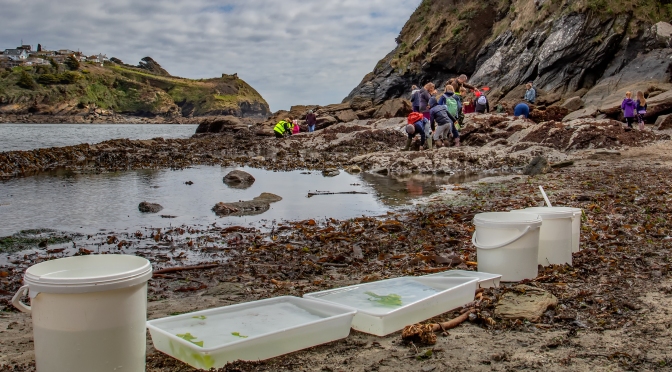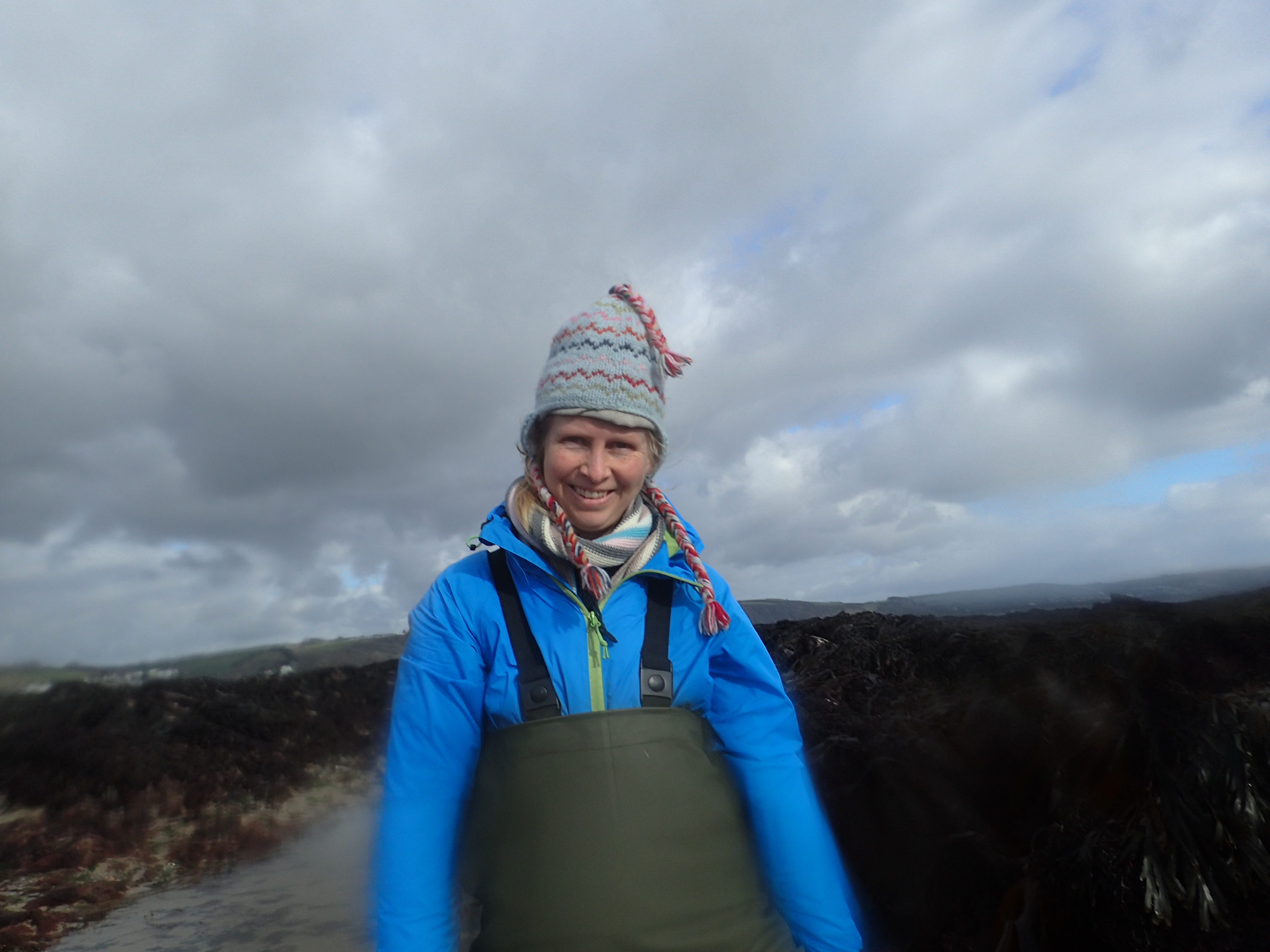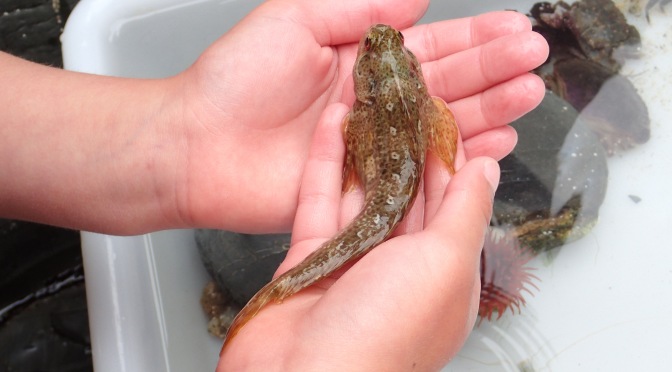After a whirlwind of book promotion, including my debut on Woman’s Hour, in which I introduced the nation to barnacle reproduction, it was a relief to return to the rock pools. Thursday was the sort of mizzly day that only sea creatures and marine life fanatics appreciate, so I had no doubt that Dr Ben Holt would turn up as planned for some distanced exploration of one of my favourite local rocky shores near Looe.

Ben may have started his career researching fish in the Caribbean, but he soon realised that Cornwall was the best place in the world and moved to Falmouth, where he founded the fabulous Rock Pool Project.
The Rock Pool Project is a not-for-profit social enterprise, offering not just rockpooling and marine conservation themed activities on Cornish beaches for the public and school children, but also brings the rock pools indoors with the help of its mobile rock pool. So far, the team of experts has visited schools, care homes and community events to give people the chance to learn about our rock pool wildlife and how we can look after it. Now they are looking to expand their range of citizen science projects that everyone can join in, as well as reaching out more widely, once social distancing restrictions allow.

This month Junior and I helped to test out the crustacean survey method and had great fun seeing how many different species of barnacle, prawn and crab we could find within our allotted time. Anyone will be able to sign up to survey a local beach, regardless of previous knowledge and experience. It’s a great way to get out with the family, learn together and discover your local beach in a new way, and barnacles are lovely if you catch them feeding as the tide’s going out!

Back to our rainy day and Ben, Junior and I soon discovered that trying to point out tiny creatures is a challenge when you’re social distancing. I found a stalked jelly but by the time I’d moved a few metres away, the seaweed had shifted and it took a while for Ben to relocate it. Despite the challenges, we made the most of having the beach to ourselves.

The dense seaweed made it hard to see into the water, but we found crabs, urchins and ascidians as we clambered ever further out across the rocks. We had a half-mile long stretch of beach all to ourselves and everything had fallen silent under the misty cloud.


Junior discovered a clump of seaweed with lots of stalked jellies on it: Halyclistus octoradiatus and Calvadosia campanulata. Most were too small to photograph in the moving water, but we delighted in losing and re-finding them among the swirling weed.

As the tide moved in, Ben was intent on finding a stalked jellyfish for himself. After a few minutes of filming the stunningly pink entrance to a worm burrow that Junior had found, I joined Ben’s search.
With the tide rising up my boots I was about to give up on the stalked jellies, when I saw a tiny shape float past me. It looked like a stalked jellyfish that had become detached from the seaweed, drifing with the tide. I made a quick grab and scooped it into a bucket.
The whole animal was only a few millimetres long and for a moment I wondered if it was just a blob of seaweed. Junior and I peered into the bucket, heads touching. The blob had arms but wasn’t a stalked jelly. It looked more like a miniature space rocket pointed skyward, with trailing tentacles spread around its base. As we watched it launched, zipping across the bucket at surprising speed.

Under my camera it was weirder than ever. The rocket shape was enclosed in a jelly dome and the tentacles had a knobbly appearance, rather like the sucker arms of an octopus. At the base of each tentacle was a black spot: a primitive eye. This was a jellyfish-like medusa of an athecate hydroid, Cladonema radiatum, a species I’ve only seen once before. We decided to call it the rocket jelly, although I’ve also heard it called the root-arm jelly, presumably due to those twisting tentacles. Although it isn’t a true jellyfish, the tentacles do pack a fair sting.

We took turns watching and trying to photograph the minute animal as it zipped around a petri dish. The tide was rising steadily so after a few minutes, Junior waded out and released the medusa, repeating the process several times as it kept swimming back to the petri dish.


It may be a while before we are able to resume events and before I can meet again with Ben and his team, but lots is going on behind the scenes both at The Rock Pool Project and at Cornish Rock Pools HQ where the first draft of my new children’s activity book is nearing completion. Watch this space!




































